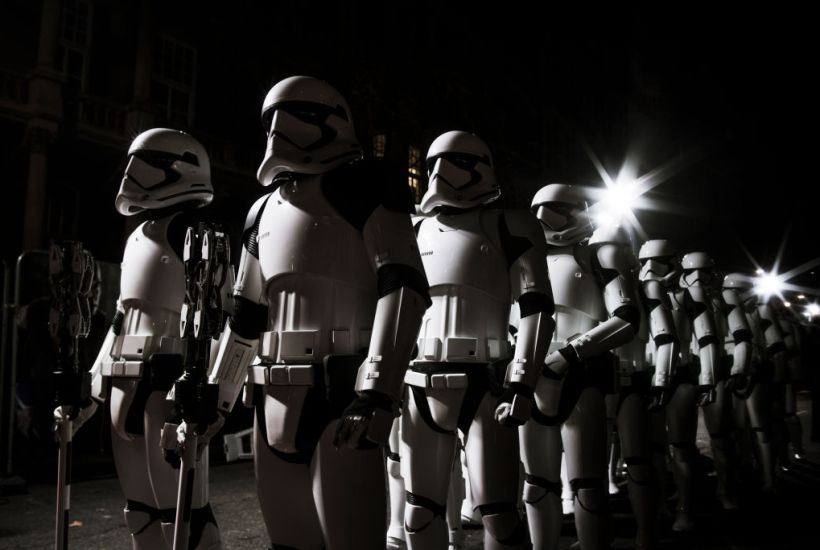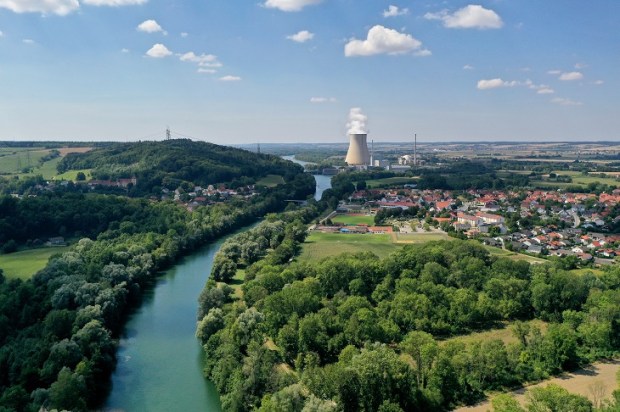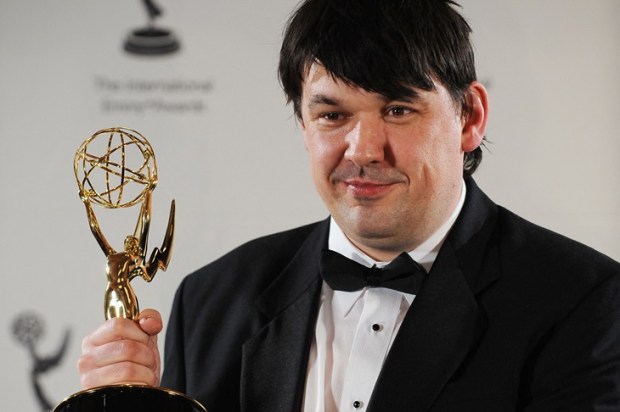The latest of the Disney “Star Wars” franchise is out, and it’s already dividing the audiences – and not just on its artistic and storytelling merits. Scanning the media commentary, one gets the impression the “long time ago in a galaxy far far away” saga is getting increasingly political, which some fans love and others hate, depending on where they stand in real life in relation to the type of political injected into the Jedi-Sith struggle.
As CNN reports (spoilers alert):
Pop culture can hardly avoid politics anymore, especially in the case of a huge target like “Star Wars.” But the latest movie, “The Last Jedi,” appears to lean into the political fray, from its egalitarian message to a more specific critique of callous plutocrats. For starters, the film’s revelations about the lineage of Rey (Daisy Ridley), and the closing image that dovetails with that, suggest that a powerful connection with the Force can come from the humblest of origins. While the series has focused on inherited power in the Skywalker clan — from Anakin to Luke, Leia to Ben/Kylo Ren — allowing for the fact that the bad guy might by misleading Rey, “The Last Jedi” seemingly dispenses with heredity as a primary concern. More pointedly, the mission undertaken by Finn (John Boyega) and Rose (Kelly Marie Tran) leads them to a planet where the ultra-rich congregate at what amounts to an intergalactic casino. Moreover, it’s noted that most of those one-percenters earned their money from war profiteering — selling weapons to the First Order and Rebels alike — while subjugating and exploiting those around them. The pair’s escape also weaves in an animal-rights theme, as the two rebels liberate a creature used for a kind of horseracing entertainment. The beast eventually wanders off free, regaining its natural state.
And all that’s even before analysing the “triumphant feminism” of “The Last Jedi” (as if Princess Leia in the original trilogy was a marginal character).
 But “Star Wars” as a left-wing critique of the American society is hardly restricted to the latest instalment of the saga, as once again CNN recalls:
But “Star Wars” as a left-wing critique of the American society is hardly restricted to the latest instalment of the saga, as once again CNN recalls:
In 2005, many took dialogue in “Revenge of the Sith” as a not-so-subtle indictment of the Bush administration, starting with Princess Amidala’s observation as the Emperor expands his wartime powers. “So this is how liberty dies,” she says, “With thunderous applause.” Later, when the turned-to-darkness Anakin Skywalker confronts Obi-Wan Kenobi he warns, “If you’re not with me, then you’re my enemy,” to which his former master replies, “Only a Sith deals in absolutes.” To many, the exchange vaguely echoed then-President George W. Bush’s pronouncements about terrorism.
Spoiler alert: liberty somehow survived the Bush Jr presidency, and the democracy did not die either to a thunderous applause or in darkness.
All this is important to remember because in the current media environment of 24-hour news cycles and 24-second attention spans, the Millennial tendency to imagine that everything is new under the sun and that nothing of any import has happened before we were born becomes the philosophy and the driving force behind the news production and consumption.
This, perhaps, is a good time to recall that right from the outset, “Star Wars” was conceived as a still fashionable in the 1970s New Left critique of the United States and its foreign and military policies:
Vietnam, it turns out, was a strong undercurrent in the thinking of Lucas (who was rejected for the draft because he was diabetic). Even before he made “Star Wars,” he wanted to make a documentary-style antiwar film on Vietnam that was to be called, in a title devised by his friend John Milius, “Apocalypse Now.” (The project passed on to another Lucas compadre, Francis Ford Coppola, who had given Lucas his first movie job working on the musical “Finian’s Rainbow.”) Lucas saw “Apocalypse,” “American Graffiti” (set in 1962) and “Star Wars” as a loosely linked thematic trilogy exploring the war in Southeast Asia, the prelapsarian glory before it and the fascistic Empire-ruled aftermath (“Star Wars” was originally set in the 33rd century).
Back in a 1973 note on “Star Wars,” Lucas made clear which side he was rooting for in the Vietnam War: “A large technological empire going after a small group of freedom fighters.”
The connection with the 1960s and 70s America is strong in this one:
Although there are parallels between Emperor Palpatine and dictators such as Hitler and Napoleon Bonaparte, the direct inspiration for the saga’s evil antagonist was actually an American president. According to J.W. Rinzler’s “The Making of Star Wars: Return of the Jedi,” when asked if Emperor Palpatine was a Jedi during a 1981 story conference, Lucas responded, “No, he was a politician. Richard M. Nixon was his name. He subverted the senate and finally took over and became an imperial guy and he was really evil. But he pretended to be a really nice guy.” In a 2005 interview published in the Chicago Tribune, Lucas said he originally conceived “Star Wars” as a reaction to Nixon’s presidency. “It was really about the Vietnam War, and that was the period where Nixon was trying to run for a [second] term, which got me to thinking historically about how do democracies get turned into dictatorships? Because the democracies aren’t overthrown; they’re given away.”
Just think about it when you re-watch the original “Star Wars” trilogy: George Lucas conceived the whole story as a science-fiction metaphor for his own times – the (small letter “e”) evil Empire is his own United States, and the heroes, the good guys that we, the viewers, are meant to root for, are the communist guerrillas.
The New Left “revisionist” historians of the 1960s and thereafter, of course, loved to refer to the United States throughout all its history, up to and including the present, as “the Empire”. Thus, according to the left-wing metanarrative, the American Empire was a quasi-fascistic, semi-dictatorial, highly aggressive and militaristic polity in the grip of “the military-industrial complex” and “the power elites”, suppressing dissent and subjugating minorities at home, while continuously invading poor Third World countries to crush their national aspirations in the interests of the American corporations and the American war machine. This is the Galactic Empire too, whether it’s in the 33rd century or a long time ago in a galaxy far far away. Just so you can’t possibly miss the point about how evil the United States is, the Galactic Empire’s trappings are meant to bring to your mind Nazi Germany, with its crisp uniforms and military parades – George Lucas channelling Leni Riefenstahl as a social commentary on his own country. No wonder it makes you root for the courageous Rebels and the brave Ewoks, whose low-tech (and ultimately victorious) battle with the Imperial forces on Endor, comes as close to a restaging of a Vietnam jungle battle as possible in a science-fiction epic.
All this will no doubt come as somewhat of a surprise, and not a particularly pleasant one to that, to tens of millions of American viewers of the original trilogy, who probably did not imagine they are meant to be cheering the victory of communism over their fascistic country.
It would have certainly come as a surprise to a much younger me, living and going to the movies in the communist Poland of the late 70s and the early 80s. I saw the first “Star Wars” movie a year or two after it has first come out in 1977 (it kept being screened in Polish cinemas for a very long time due to the extensive demand). I did see the two sequels, however, as they hit the screens in 1980 and 1983, as an 8 and an 11-year-old, and many times thereafter. So did millions of other Poles, younger and older.
To us, “Star Wars” was a simple story of the struggle of good against evil, and as such, we had no doubt whatsoever which side was which. The highly-militarised empire was the Soviet empire next door, of which we were a part, against our will and aspirations. The Rebels would have been any group of decent, average people who have ever stood up to the communist might, from our own Home Army in the dying days of World War Two, the Hungarians of 1956, Solidarity of 1980, or the Afghans battling the Red Army invaders and occupiers.
If someone has told us then, in 1977 or 1980, or 1983, that we got it all wrong, and the Empire was actually the United States and we were meant to cheer on the brave, plucky communist insurgents, we would have been first dumbstruck, then incredulous, and then perhaps furious. How could a creative genius living and working in the freest and most prosperous society in history possibly think that? It would have been almost impossible to conceptualise.
Lucas’s another major inspiration, this time for the storytelling and the narrative aspect of the trilogy, was Joseph Campbell’s classic of anthropology and mythology “The Hero with a Thousand Faces”, which talks about the small number of archetypal characters and archetypal quests present in all oral (and later written) traditions across all the cultures and at all the times around the world. The story of Luke, Obi-wan, Leia, Han Solo, and Darth Vader is as old as the humanity itself, even if cloaked by Lucas in Jedi robes and given light sabres and laser guns to fight instead of swords and revolvers.
The left is an unchanging archetype too, and the history of the “Star Wars” saga from the early 1970s to the present provides a little cultural window on that story too. For the far (and often not so far) left, the United States is always the enemy, the monster, the bad guy, and so whoever confronts it and fights it – the enemy of my enemy – is the hero to be cheered on, whether Uncle Fidel’s Cubans, the Viet-Cong, the Sandinistas, or even the Arab insurgents. The United States, too, is perpetually on the brink of a fascist dictatorship, whether under Richard Nixon, or Ronald Reagan, George W Bush, or Donald Trump (in fact, pretty much every Republican president). The country in which the left live, work, and politic, is the source of all the evil in the world and not an example to be emulated by others.
So much for the left’s hyperventilation and ideological wet dreams. Alas, the reality always fails to live up to their caricature. This is something to remember too.
Like the “Star Wars” itself, the left-wing ideological franchise is too emotionally lucrative to let go. Come the year 2050 and the release of “The Return of the Sith” during the George P Bush/Ivanka Trump presidency, the best of Hollywood will no doubt continue to try to subtly teach the new generations of movie-goers to hate their own country and everything it stands for.
Got something to add? Join the discussion and comment below.
Arthur Chrenkoff blogs at The Daily Chrenk where this piece also appears.
Got something to add? Join the discussion and comment below.
Got something to add? Join the discussion and comment below.
Get 10 issues for just $10
Subscribe to The Spectator Australia today for the next 10 magazine issues, plus full online access, for just $10.


























Comments
Don't miss out
Join the conversation with other Spectator Australia readers. Subscribe to leave a comment.
SUBSCRIBEAlready a subscriber? Log in